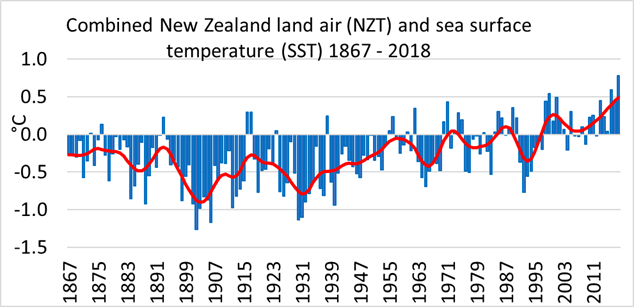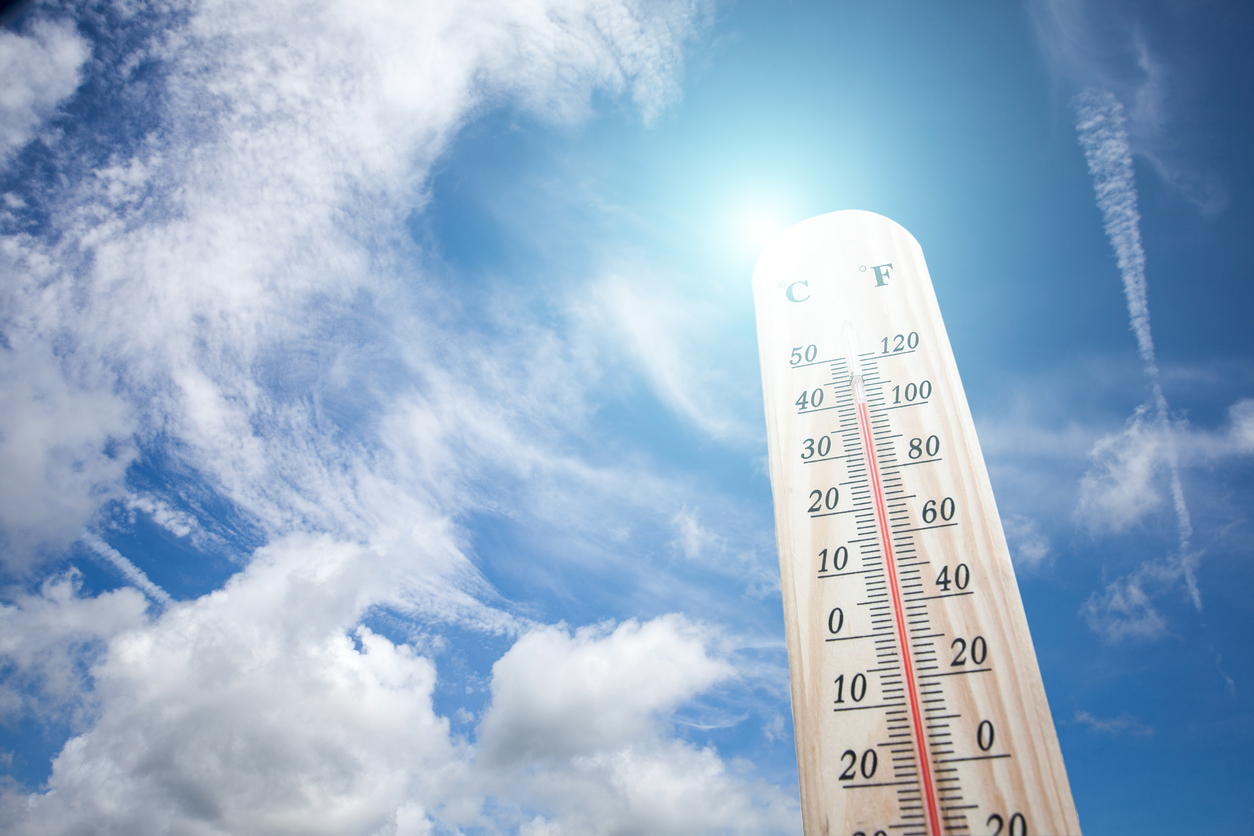MetService has warned there is a hot week ahead for many parts of the country, with many towns and cities set for 30C+ weather.
The Ministry of Health’s Heat Health Plan Guidelines, published last week, outline ways to support those most at risk during extreme heat, which include infants, older people and those with pre-existing medical conditions.
Last week, researchers published findings from last summer’s marine heatwave, suggesting the conditions could become the norm for New Zealand summers by the end of the century.
The SMC has asked experts to comment on the heatwave.
Dr Anne-Gaelle Ausseil, Manaaki Whenua Landcare Research, research priority leader, comments:
“Our changing climate will likely bring even more drought events and heatwaves like the one we’re experiencing this week. This has implications for our primary sector: impact on animal welfare (high humidity with high temperature is detrimental for animal health and production), shortage of water due to a combination of low flows and increased irrigation demand, increased fire risk but also increased nutrient leaching risk during rewetting of the soil that we need to understand and reduce. We should start focusing on how we can adapt, to get prepared as these events get more frequent, possibly faster than originally thought.”
Dr Annette Bolton, ESR scientist and the author of a report commissioned by the Ministry of Health on how climate change is expected to affect the health of New Zealanders over the next 50 to 100 years, comments:
“This week’s predicted heat wave is another stark reminder of how increased atmospheric warming can impact our health. Reducing greenhouse gas emissions is an important step, which could not only help the reduce the burden on the planet but promote health benefits.
“More hot days will also affect behavioural choices and could lead to acute sunburn while raising the long-term risk of skin cancers.
“We also need to think about the other health impacts associated with warmer weather, such as how pollen allergy might change, the amount of pollen being produced and the length of the pollen season. This is currently not being monitored in NZ.
“There is obviously a trade-off between taking advantage of warm weather – for walking and cycling which is good for health and well-being – and then a point when staying inside is safer. This means we need to think about how we design our cities and homes to make them shadier, creating cooler public spaces and adapting to different weather events, including heatwaves.”
No conflict of interest
Dr Iain White, Professor of Environmental Planning, University of Waikato; Visiting Professor, University of Manchester, UK, comments:
“While New Zealand is fortunate to have a temperate climate in comparison to much of the world, heatwaves will still have an effect on people and places as it’s not just a matter of absolute temperature, more what you are used to.
“In simple terms, extremes of heat affect the built environment and human behaviour. For instance, in response to the heat you may stay in the house and put on air conditioning. This is an example of a maladaptive response we want to avoid, however, as using increased energy for cooling may increase emissions and future vulnerability.
“From a planning perspective, much international research is looking into understanding how extreme temperatures may affect different places and then mainstreaming adaptation in urban policies and plans. At the building scale, this can be targeted at different building codes, but coordinated adaptation at the city scale can bring wider cross-sectoral benefits. A city-wide green infrastructure strategy to increase trees, green roofs, or other natural features is a good example. This typically does not just bring shading and cooling, but if planned in a strategic manner can help biodiversity, absorb extremes of precipitation, and provide positive social and economic feedbacks too.”
No conflict of interest.
Glen Greaves, Senior Ranger/Supervisor – Takahē, Department of Conservation, comments:
“The Takahē Recovery Team is very aware of the impact weather can have on animals, especially during handling. We have a policy of no captures during rain or snow, and have an upper-temperature threshold of 20C. We do have our annual banding and vaccinations planned for this week, but if the heatwave does reach Southland, we will do the work between 6am and 9am, or if necessary, postpone.”
Dr Alex Macmillan, Senior Lecturer Environmental Health, University of Otago and Co-Convenor OraTaiao: NZ Climate & Health Council, comments:
“Take care as the heat rises especially if you’re elderly, pregnant, or already have a medical condition. Babies and children are also more at risk with rising heat, while healthy adults who work outdoors and those people who are in institutions like prisons, hospitals, and residential care are also especially vulnerable.
“As we continue to see every year breaking new records for average and highest temperatures, climate change begins to take its health toll in the form of more days of extreme heat.
“Even short duration, heat waves can increase deaths and hospital admissions from heat stroke, heart and lung disease, placing a heavy burden on families, communities, and the health system. While New Zealand’s high temperatures are not like those being seen in Australia, it’s what our bodies are used to and our buildings are designed for that matters most.
“In New Zealand, this means temperatures in the mid-30s Celsius, which we are simply not prepared for. Hot dry days also increase the health risk from bushfires, including burns and other injuries, as well as smoke-related air pollution impacts on lung and heart health.
“As year on year we break new heat records as a result of our collective failure to act on climate change, New Zealand urgently needs a climate change and health adaptation plan, so that we can ensure people’s health is protected from the impacts of climate change, including these higher summer temperatures.
“The good news is that by investing now in well-designed climate action, including homes and public buildings that are easy to cool without fossil fuels, and better city planning, we can stay healthier and more resilient to heat events like this, and reduce our climate pollution at the same time. Protecting health from increasingly severe heat waves requires New Zealand to be part of urgent global climate action.”
No conflict of interest.
Dr Jim Salinger, University Associate, University of Tasmania, Australia; Visiting Professor, University of Florence, Italy comments:
“As we move into yet another heatwave we need to consider where this fits with our warming climate. Below is the combined land air and sea surface temperatures for the New Zealand region.

“Combining the weighted land and sea temperatures shows 2018 was the warmest year on record, at 15.26°C, +0.78 higher than the 1981-2010 average, followed by 2016 with 15.07°C (+0.59°C) then 1999 with 15.02°C (+0.54°C). The warming over the entire period has been about 0.8°C. The period centred on 2018 is the warmest in the entire record back to 1867.
“Last summer’s heatwave was unparalleled, for several extreme events and statistics. The average land surface air temperature was 2.2°C above the 1981-2010 normal of 16.7°C. The peak month was January 2018, 3.2°C above normal and the warmest month on record. The marine heatwave that lasted about five months, and 2.0°C above normal at its peak.
“And as the country enters another heatwave period for January, NZT [land air temperature] is running at 1.4°C and SST [sea surface temperature] 1.8°C above average. Thus, this year SSTs are 0.2°C and NZT 1.0°C behind those of last year. Global warming means temperatures are now about 1°C warmer than a hundred years ago. With further global warming, what we are seeing now and last year’s summer could be the norm in the years 2081 – 2100.”
No conflict of interest declared.
Dr Karin Schütz, Senior Scientist, AgResearch, comments:
“Animal welfare is a major concern for New Zealand farmers during hot summer months.
“Cows will change their behaviour to cope in the warm conditions, including drinking more, eating less, seeking out ‘micro-climates’ in the shade or close to water, and orienting themselves differently from the sun.
“If you want to keep up production, you need to keep your animals cool. That can mean providing shelter (such as trees), increasing access to drinking water, reducing walking distances, and preventing stress. If it is really hot, a lot of farmers will use sprinklers at their milking sheds to cool the cows as they wait to be milked.
“Given a choice, however, we have found the cows will seek shade over the sprinklers, and from our research we know the cows can tell the difference between different degrees of shade and will choose shade that protects them more from solar radiation.
“Research shows that when the air temperature reaches 21C and humidity more than 75 per cent, it can affect the cow’s behaviour and milk production could decline.”
